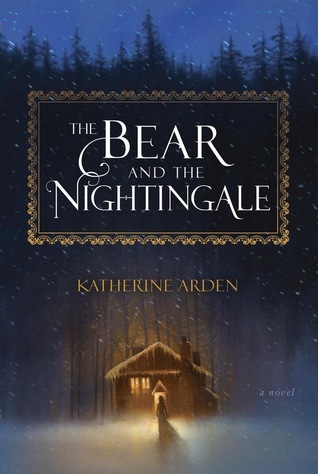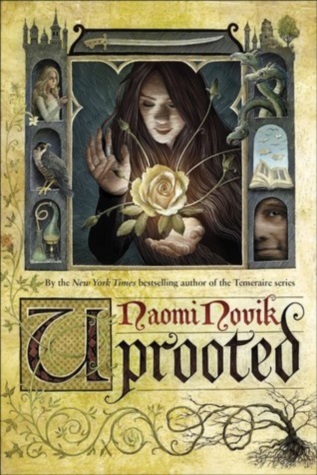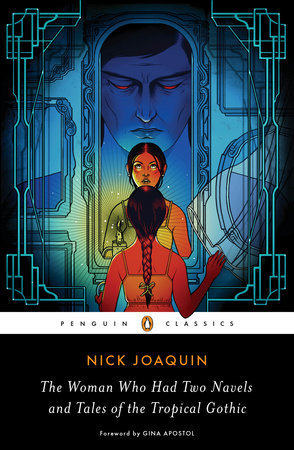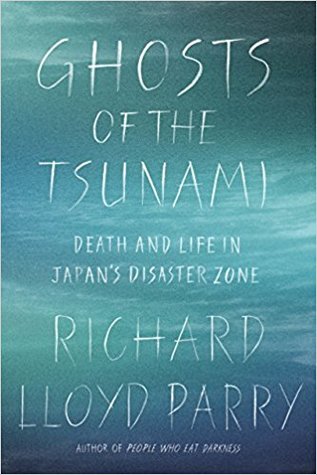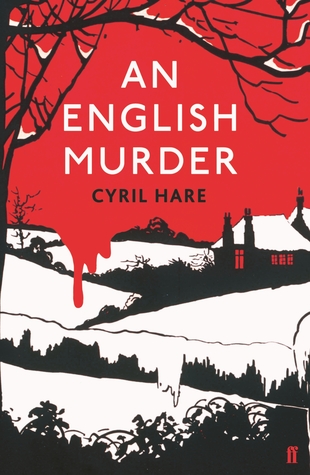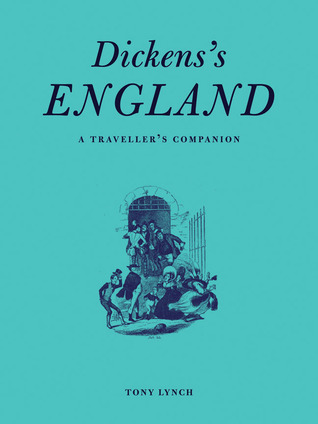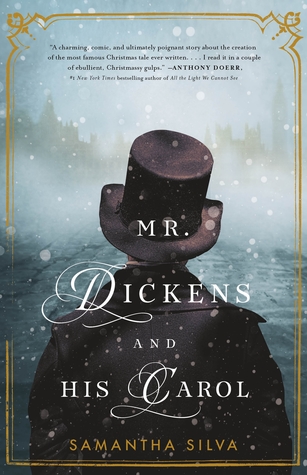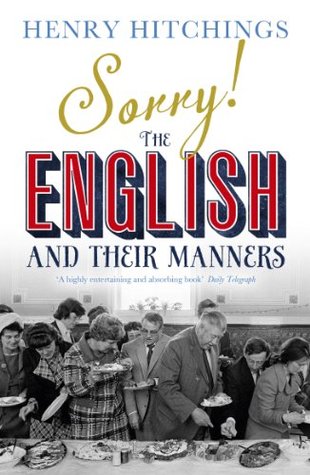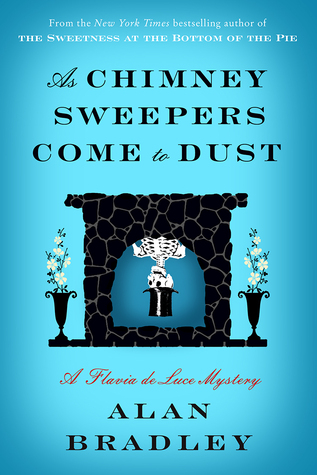I'm cutting it very close, but here's my roundup for this year! This year as more eventful than most and reading really became my escape. I only did one challenge, because I didn't want to put pressure on my reading time, and I think that was the right decision.
SEA Reading Challenge Update
Anyway, last year I decided that I wanted to read more stories set in SEA, written by SEAsian writers. It turned out to be way harder than I thought, because the NLB doesn’t have much of an e-selection and I was in Japan for most of the year.
Books that I read for the SEA Reading Challenge (All links lead to the review)
1. The Gift of Rain (Malaysia)
2. Illustrado (Philippines)
3. Last Night I Dreamed of Peace (Vietnam)
4. The Woman Who Had Two Navels and Tales of the Tropical Gothic (Philippines)
5. Land of the Meat Munchers (Singapore)
6. The Kite of Stars (Philippines)
So by my own standards, I’m an ‘exchange student’.
Half the books are from Philippines. I’m not sure why, but maybe their literary history is longer? When I search for books from the other SEA countries, I mostly find non-fiction, mostly written by someone not from that country. If it’s fiction by someone from that country, a lot of it is about leaving the country and settling in the states, which is not what I’m looking for.
Or maybe it’s just the kind of books NLB has.
I also realised that I’m not very interested in literary fiction. Literary fiction does have its merits, but I want to see fun stories. Why must ‘writing about SEA’ = ‘writing serious’? Why can’t we write genre and just have them in SEA like it’s normal? (Okay, maybe this is because I’m not a literary fiction person in general)
On the bright side, I have seen more mysteries coming up. They just aren’t really in ebook format.
My favourite books from this year
In a stunning reversal from last year, only 2 of the 6 favourite books for this year are non-fiction. I’m not sure if it’s because I read so much awesome non-fiction last year that it’s hard for this year's books to compare, or if it’s because I’ve been more conscious of great fiction. Probably a bit of both.
And now, my top 6 books of the year:
1. The Bear and the Nightingale by Katherine Arden
By now, I trust that you have caught on to the fact that I LOVE FAIRY TALES. And The Bear and the Nightingale is one of the best fairytale inspired story that I’ve ever read, which is why it’s one of my favourites for the year.
The Bear and the Nightingale is inspired by Russian fairytales. Vasya, the protagonist, has received an enchantment passed down from her mother and grandmother, allowing her to see and talk to the magical creatures around her.
However, her idyllic world is shattered when her father remarried, bringing her stern stepmother into their lives. Where Vasya sees magic, her stepmother sees demons.
What I love about this book (apart from the fairy tale references) is the world building and the nuanced characterisations. So basically the whole thing.
The second book, The Girl in the Tower, is already out (review to come) and it’s awesome so go read that too!
2. Uprooted by Naomi Novik
Uprooted is a bit hard to explain, but there’s Agnieszka, a witch whose magic is differen from the norm, a dragon who’s a wizard and not evil, Kasia, the best friend and a sentient forest. It also manages to fit a trilogy’s worth of content in one book without feeling rushed.
Like The Bear and the Nightingale, this book has a definite “fairytale” feel and I really enjoyed it.
3. The Radium Girls by Kate Moore
Right now, we are all aware that radium is life-threateningly dangerous. But way back in the days of WWI, radium was thought to be healthy and scores of girls were hired to paint the dials with radium. However, when they started to sicken (and die), the companies that hired them denied that it was due to radium and did their best not to pay them compensation.
The Radium Girls is the story of the girls who worked with radium. Their work saved the lives of soldiers, but in return all they got were damaged bodies. This story is important and the book does an amazing job of showing us both the big picture and the individual girls affected.
Definitely a must-read.
4. The Woman Who Had Two Navels and Tales of the Tropical Gothic by Nick Joaquin
I read this for the SEA Reading Challenge this year and it was amazing! Totally worth the challenge.
The Woman with Two Navels and Tales is the Tropical Gothic is a collection of short stories. The language is amazingly beautiful and even if I don’t get the stories, they make me feel. The stories contain the heat of the place, the dense humidity, the chaos of life and is both universal and specific.
Truly amazing.
5. The Shadow of the Wind by Carlos Ruiz Zafon
I was introduced to this book when a friend sent me the third book in the series and I decided that I had to read the first book first.
The Shadow of the Wind is a coming of age + mystery about books (like how awesome is that?) The story starts when Daniel (the protagonist) is brought to the Cemetery of Forgotten Books and allowed to take one book back. The book that calls to him is The Shadow of the Wind by Julian Carax.
As Daniel grows up, he finds out that someone has been buying and burning copies of Carax’s novels. As he slowly makes friends and enemies, he does his best to find out who Julian Carax is and why someone is targeting his books.
Not only is this wonderful story about books, it manages to balance the mystery and Daniel’s coming of age story perfectly.
Totally a book for bookworms.
6. Ghosts of the Tsunami by Richard Lloyd Parry
Some books are hard to read but they’re necessary. Ghosts of the Tsunami is about the aftermath relating Okawa Elementary School, where a series of tragic misdecisions led to the deaths of 74 out of 78 students and 10 out of 11 teachers.
When you face a tragedy this big, you’ll want answers. But answers weren’t forthcoming, and the parents ended up taking things into their own hands.
By focusing on the emotions and reactions of the survivor parents, the book touches on issues of grief, survivor’s guilt, the feeling of loss, how they started rebuilding, and how the community reacted.
This is one of the most powerful books that I’ve read this year.
2018 Reading Plans
I don’t really have a number goal (I normally just set it to 100 so I can get the Goodreads counter), but I’m hoping that working in Singapore doesn't affect my book reading habit. There are quite a few series that I intend on continuing, like Bryant and May, the Shardlake mysteries, the sequel to Three Dark Crowns, etc so I hope they get read in 2018. Plus the backlist from authors like Cyril Hare to explore.
And of course, I have my perpetual growing TBR list to conquer as well.
What I would like to do more of is the SEA Reading Challenge. I definitely want to see if I can read more than 6 books in 2018 because it’s kind of sad that I don’t know much about the writers and stories around me. Hopefully being in Singapore will help.
I guess these are my plans. I really don’t think I can put too much on (so no other challenges) because reading is my way of relaxing and too many reading challenges/goals just make it stressful. I’ve got enough stress as it is.
Sunday, December 31, 2017
Friday, December 29, 2017
An English Murder by Cyril Hare
Cyril Hare is one of the writers on my TBR list and when I saw his book on offer, I just had to get it. Plus, it’s a Christmas murder so it’s seasonally appropriate (and I read it on Christmas Day so yay me, I guess?)
An English Murder takes place during a very tense Christmas party. The dying Lord Warbeck has called his friends and family together. The guest list consists of Sir Julius, his cousin and Chancellor of Exchequer, Lady Camilla Prendergast, a really sweet girl who was in love with his son, Mrs Carstaire, a pushy woman proud of her is husband, and his son Robert, a nasty anti-Semitic who runs the racist ‘League of Liberty and Justice.’
Also at the house is Dr. Bottwink, a historian studying the history of the family (and the detective of the story), Rogers, a policeman assigned to protect Sir Julius, the Butler, and his daughter, who has a secret relationship with Robert.
Anyway, since Robert is the nastiest character, he gets killed off and it seems like almost everyone has a motive. While Sir Julius and Lady Carstairs try to make it seem like a suicide, Dr. Bottwink and Rogers are investigating (although not as a team).
I really enjoyed this story and I don’t get why the library had very few copies of Cyril Hare’s books (I don’t think they have an English Murder). The writing is easy to read and the mystery was well-plotted, with everyone seeming suspicious. I also liked the characterisations - Camilla is the typical ‘sweet girl’ but Sir Julius and Mrs Carstairs stand out because they show that self-interest and pompous behaviour has always been around. Of course, they’re the ones who push the suicide theory.
Dr. Bottwink was also wonderfully written. Like Poirot, he is not English, but that’s where the similarity ends. He doesn’t have the arrogance of Poirot (and I like Poirot, so this isn’t really a criticism of him) and he’s really passionate about history, which makes him a really charming character. His deductions made sense too, and I liked the reveal.
I also enjoyed how this book explored themes of class/social structures in Britain. It’s not the dominant theme (though it is important), but having Dr. Bottwink try to feel his way through the unspoken societal rules allowed the book to explore the topic a little.
If you like mysteries, especially those from the Golden Age, you have to read this. It’s a great locked-room mystery (the house is snowed in) with a cast of characters that spring to life as soon as the book opens.
An English Murder takes place during a very tense Christmas party. The dying Lord Warbeck has called his friends and family together. The guest list consists of Sir Julius, his cousin and Chancellor of Exchequer, Lady Camilla Prendergast, a really sweet girl who was in love with his son, Mrs Carstaire, a pushy woman proud of her is husband, and his son Robert, a nasty anti-Semitic who runs the racist ‘League of Liberty and Justice.’
Also at the house is Dr. Bottwink, a historian studying the history of the family (and the detective of the story), Rogers, a policeman assigned to protect Sir Julius, the Butler, and his daughter, who has a secret relationship with Robert.
Anyway, since Robert is the nastiest character, he gets killed off and it seems like almost everyone has a motive. While Sir Julius and Lady Carstairs try to make it seem like a suicide, Dr. Bottwink and Rogers are investigating (although not as a team).
I really enjoyed this story and I don’t get why the library had very few copies of Cyril Hare’s books (I don’t think they have an English Murder). The writing is easy to read and the mystery was well-plotted, with everyone seeming suspicious. I also liked the characterisations - Camilla is the typical ‘sweet girl’ but Sir Julius and Mrs Carstairs stand out because they show that self-interest and pompous behaviour has always been around. Of course, they’re the ones who push the suicide theory.
Dr. Bottwink was also wonderfully written. Like Poirot, he is not English, but that’s where the similarity ends. He doesn’t have the arrogance of Poirot (and I like Poirot, so this isn’t really a criticism of him) and he’s really passionate about history, which makes him a really charming character. His deductions made sense too, and I liked the reveal.
I also enjoyed how this book explored themes of class/social structures in Britain. It’s not the dominant theme (though it is important), but having Dr. Bottwink try to feel his way through the unspoken societal rules allowed the book to explore the topic a little.
If you like mysteries, especially those from the Golden Age, you have to read this. It’s a great locked-room mystery (the house is snowed in) with a cast of characters that spring to life as soon as the book opens.
Thursday, December 28, 2017
The House on Foster Hill by Jamie Jo Wright
I'm basically a mystery-person, which is why I requested The House on Foster Hill. Houses with a dark history? Definitely gonna read that. It turns out that this is a Christian mystery, so it's not as scary as I assumed it would be, but it was still pretty interesting.
After the suspicious death of her husband, Kaine decided to renovate a house because that was his dream that she never got to do. The house she chose is related to her great-grandmother. But when she moves in, she finds that her stalking issue has increased.
For the second plot, which takes place in the past, Ivy becomes obsessed with solving the murderer of Gabriella. Who was she and what happened to her baby? And can she work with Joel, the man she thought she loved (until the Tragic Event). The dual plot lines of Kaine and Ivy mirror each other as the danger and tension increases. Along the way, both women have to confront their loss of faith.
Personally, Kaine and I got off to a rocky start when she said that “she never liked Dickens. He took four pages to explain one setting when he only needed a paragraph.” Well, I actually hold the works of Dickens in higher esteem so...
And there was one odd head-hop moment just past the 25% mark.
But the characters grew on me after these hiccups and the pacing increased in a way that I was rushing through the last quarter of the book to find out who the culprits were.
I thought the Christianity in the book was rather heavy-handed (or at least, I noticed it, and I don’t normally do unless it’s Christian-Christian fiction). I’m completely okay with that since this is my faith, but if you don’t like that sort of thing, you may want to avoid the book.
Overall, I thought this was a decent mystery. The dual plotlines came together nicely and I was invested in the characters by the end of the book.
Disclaimer: I received a free copy of this book from the publisher via NetGalley in exchange for a free and honest review.
After the suspicious death of her husband, Kaine decided to renovate a house because that was his dream that she never got to do. The house she chose is related to her great-grandmother. But when she moves in, she finds that her stalking issue has increased.
For the second plot, which takes place in the past, Ivy becomes obsessed with solving the murderer of Gabriella. Who was she and what happened to her baby? And can she work with Joel, the man she thought she loved (until the Tragic Event). The dual plot lines of Kaine and Ivy mirror each other as the danger and tension increases. Along the way, both women have to confront their loss of faith.
Personally, Kaine and I got off to a rocky start when she said that “she never liked Dickens. He took four pages to explain one setting when he only needed a paragraph.” Well, I actually hold the works of Dickens in higher esteem so...
And there was one odd head-hop moment just past the 25% mark.
But the characters grew on me after these hiccups and the pacing increased in a way that I was rushing through the last quarter of the book to find out who the culprits were.
I thought the Christianity in the book was rather heavy-handed (or at least, I noticed it, and I don’t normally do unless it’s Christian-Christian fiction). I’m completely okay with that since this is my faith, but if you don’t like that sort of thing, you may want to avoid the book.
Overall, I thought this was a decent mystery. The dual plotlines came together nicely and I was invested in the characters by the end of the book.
Disclaimer: I received a free copy of this book from the publisher via NetGalley in exchange for a free and honest review.
Labels:
Christianity
,
mystery
,
NetGalley
Wednesday, December 27, 2017
England Trip Photos
Hi everyone! I'm back from my England trip and it was awesome (and very cold). I thought that today, instead of a book review, I'd share some photos. It was a pretty long trip and I took around 500 photos (I think?) so here are (most) of the places that we visited:
Shakespeare's Globe Theatre - I highly recommend going for the tour. I hope that I can catch a performance there someday!
Saint Paul's Cathedral - Absolutely beautiful, be prepared to climb many, many steps if you want to go up to the dome. The tour is also worth attending.
Dragon of London
Tower Bridge
View of Oxford from the Sheldonian Theatre:
Stonehenge:
Roman Baths:
Bath Abbey
Surprisingly, photos are allowed inside too!
Jane Austen Center - a must-visit if you're a fan of Jane Austen. The center focuses on her time in Bath, but there is an informative talk (given before you head to the exhibition area) about her life. The tea room on the third floor serves delicious food! Do try the Jane Austen blend of tea.
Shakespeare's Birthday in Stratford upon Avon.
Cadbury Factory (It's no Willy Wonka, but if you're a fan of chocolate, I think you'll enjoy it).
Hadrian's Wall
Old Trafford
Random shot that I took from the car:
And my book haul! I decided that instead of the usual souvenirs (like keychains or bookmarks), personal souvenirs would be books. So I ended up buying nine books, which I'm really excited to read(:
And that is my trip in a nutshell. Hope you enjoyed the photos!
Shakespeare's Globe Theatre - I highly recommend going for the tour. I hope that I can catch a performance there someday!
Saint Paul's Cathedral - Absolutely beautiful, be prepared to climb many, many steps if you want to go up to the dome. The tour is also worth attending.
Dragon of London
Tower Bridge
View of Oxford from the Sheldonian Theatre:
Stonehenge:
Roman Baths:
Bath Abbey
Surprisingly, photos are allowed inside too!
Jane Austen Center - a must-visit if you're a fan of Jane Austen. The center focuses on her time in Bath, but there is an informative talk (given before you head to the exhibition area) about her life. The tea room on the third floor serves delicious food! Do try the Jane Austen blend of tea.
Shakespeare's Birthday in Stratford upon Avon.
Cadbury Factory (It's no Willy Wonka, but if you're a fan of chocolate, I think you'll enjoy it).
Hadrian's Wall
Old Trafford
Random shot that I took from the car:
And my book haul! I decided that instead of the usual souvenirs (like keychains or bookmarks), personal souvenirs would be books. So I ended up buying nine books, which I'm really excited to read(:
And that is my trip in a nutshell. Hope you enjoyed the photos!
Labels:
photos
Thursday, December 14, 2017
Dickens's England by Tony Lynch
This book caught my eye because it seemed out of place in the travel guide section. But I am planning to go to the Charles Dickens museum, so I decided to read it. And you know what? This is a really delightful guidebook.
Organised alphabetically, this book covers the two lives of Dickens - the actual England where he lived, worked, and traveled, and the fictional England that his characters inhabited. There is a chronology in front, and then the book delves into the various locations. For the actual England, the book talks about the events that took place when Dickens visited or lived in that location. For fictional locations, the book talks about scenes that take place (with quotations) and locations that inspired certain buildings.
For some reason, I expected this place to focus on London, so I was pleasantly surprised at the amount of non-London places that were covered. There were also a lot of 'tourist spots' like Westminster Abbey, Bath, and Stratford-upon-Avon in the book, which gave me even more to look forward to.
Also, I realised that Dickens was a very well-traveled guy, at least when it came to England.
I think this would be a good "guidebook" to read before or during a trip to England. Charles Dickens is a hugely influential English writer and if you're interested in literature, you might find your trip enriched by all these additional pieces of information.
Organised alphabetically, this book covers the two lives of Dickens - the actual England where he lived, worked, and traveled, and the fictional England that his characters inhabited. There is a chronology in front, and then the book delves into the various locations. For the actual England, the book talks about the events that took place when Dickens visited or lived in that location. For fictional locations, the book talks about scenes that take place (with quotations) and locations that inspired certain buildings.
For some reason, I expected this place to focus on London, so I was pleasantly surprised at the amount of non-London places that were covered. There were also a lot of 'tourist spots' like Westminster Abbey, Bath, and Stratford-upon-Avon in the book, which gave me even more to look forward to.
Also, I realised that Dickens was a very well-traveled guy, at least when it came to England.
I think this would be a good "guidebook" to read before or during a trip to England. Charles Dickens is a hugely influential English writer and if you're interested in literature, you might find your trip enriched by all these additional pieces of information.
Labels:
fiction
,
literature
,
non-fiction
,
western
Wednesday, December 13, 2017
The Austen Escape by Katherine Reay
I don’t normally read Austen inspired fiction (the romance is a bit too mushy for me) but this was supposed to be set in Bath and it seemed a bit different so I got it. And you know what? I really enjoyed this!
In The Austen Escape, Mary Davis is the reluctant companion to her best friend Isabel as they go for the ultimate Austen immersion experience (on a side note, if there really is a place that lets you dress up and live like Austen characters, LET ME KNOW!). Unfortunately, Isabel has a dissociative episode after receiving some very bad news and loses her memory, instead believing that she is living in Regency England.
Unfortunately for Mary, she and Isabel have been having some issues between them, and her stress at work (which is actually a pretty big part of the book) isn’t helping. When she finds out that Isabel is dating Nathan, the man she likes, things get worse. Only, how can she be mad at an Isabel who doesn’t know who she is?
What I liked about this was that the romance was very muted. Although Mary and Nathan’s relationship is one of the key themes, a large part of the book focuses on Mary and Isabel’s friendship as well as her personal growth via work problems. Everything comes together pretty seamlessly to form one overarching story.
And the Austen immersion place sounds fantastic! I want to go there! Bath doesn’t really feature in this book (although the Jane Austen Center gets a mention) but the Manor House is so delightful that I didn’t mind at all. I also really enjoyed reading about all the other guests, and I like how they each had their own stories.
If you’re an Austen fan, I think you’ll like this. It isn’t overly saccharine and I like the balance of romance, friendship, and personal development. Plus all the Austen references are really fun.
In The Austen Escape, Mary Davis is the reluctant companion to her best friend Isabel as they go for the ultimate Austen immersion experience (on a side note, if there really is a place that lets you dress up and live like Austen characters, LET ME KNOW!). Unfortunately, Isabel has a dissociative episode after receiving some very bad news and loses her memory, instead believing that she is living in Regency England.
Unfortunately for Mary, she and Isabel have been having some issues between them, and her stress at work (which is actually a pretty big part of the book) isn’t helping. When she finds out that Isabel is dating Nathan, the man she likes, things get worse. Only, how can she be mad at an Isabel who doesn’t know who she is?
What I liked about this was that the romance was very muted. Although Mary and Nathan’s relationship is one of the key themes, a large part of the book focuses on Mary and Isabel’s friendship as well as her personal growth via work problems. Everything comes together pretty seamlessly to form one overarching story.
And the Austen immersion place sounds fantastic! I want to go there! Bath doesn’t really feature in this book (although the Jane Austen Center gets a mention) but the Manor House is so delightful that I didn’t mind at all. I also really enjoyed reading about all the other guests, and I like how they each had their own stories.
If you’re an Austen fan, I think you’ll like this. It isn’t overly saccharine and I like the balance of romance, friendship, and personal development. Plus all the Austen references are really fun.
Tuesday, December 12, 2017
Sketches of Young Gentlemen and Couples by Charles Dickens
I wanted to read something by Charles Dickens before my trip and this looked interesting. Plus the library didn’t have David Copperfield or A Christmas Carol.
Sketches of Young Gentlemen and Young Couples is a collection of ‘sketches’ of different stereotypes of men and couples in Victorian Times. Sketches of Young Gentlemen was written in response to Sketches of Young Ladies by Edward Caswall (aka ‘Quiz’), and so Sketches of Young Ladies is also included in this slim volume. The people profiles include:
- The Young Lady who Sings
- The Literary Young Lady
- The Mysterious Young Lady
- The Bashful Young Gentlemen
- The Political Young Gentlemen
- The Funny Young Gentlemen
- The Loving Couple
- The Couple who Dote upon their Children
- The Egotistical Couple
And much more. In total there are 24 sketches of Young Ladies, 12 of Young Gentlemen and 11 of couples.
There’s also a really long introduction that I stopped reading, although I did learn that “the journalistic format of short fiction, essays, sketches, serials, and miscellaneous writings was very much the dominant mode of publication in the 1830s.
Personally, I really enjoyed these sketches, even those that weren’t by Dickens. Maybe it’s because I’ve read some older fiction, but I recognised a lot of the tropes and enjoyed the satirisation of them. They’re also pretty short, so it’s easy to read a sketch or two when I have some free time.
The main difference between Dickens and Caswall’s sketches is that Caswall speaks a lot more in generalities while Dickens tends to focus on one example of the stereotype. I like both styles so I don’t really have a preference (and they’re not that different anyway).
If you want to try reading Charles Dickens but don’t want to read one of his novels (because they can be quite long), you should consider Sketches of Young Gentlemen and Couples. It’s a pretty slim volume and good for a chuckle, which makes it easy to read.
Sketches of Young Gentlemen and Young Couples is a collection of ‘sketches’ of different stereotypes of men and couples in Victorian Times. Sketches of Young Gentlemen was written in response to Sketches of Young Ladies by Edward Caswall (aka ‘Quiz’), and so Sketches of Young Ladies is also included in this slim volume. The people profiles include:
- The Young Lady who Sings
- The Literary Young Lady
- The Mysterious Young Lady
- The Bashful Young Gentlemen
- The Political Young Gentlemen
- The Funny Young Gentlemen
- The Loving Couple
- The Couple who Dote upon their Children
- The Egotistical Couple
And much more. In total there are 24 sketches of Young Ladies, 12 of Young Gentlemen and 11 of couples.
There’s also a really long introduction that I stopped reading, although I did learn that “the journalistic format of short fiction, essays, sketches, serials, and miscellaneous writings was very much the dominant mode of publication in the 1830s.
Personally, I really enjoyed these sketches, even those that weren’t by Dickens. Maybe it’s because I’ve read some older fiction, but I recognised a lot of the tropes and enjoyed the satirisation of them. They’re also pretty short, so it’s easy to read a sketch or two when I have some free time.
The main difference between Dickens and Caswall’s sketches is that Caswall speaks a lot more in generalities while Dickens tends to focus on one example of the stereotype. I like both styles so I don’t really have a preference (and they’re not that different anyway).
If you want to try reading Charles Dickens but don’t want to read one of his novels (because they can be quite long), you should consider Sketches of Young Gentlemen and Couples. It’s a pretty slim volume and good for a chuckle, which makes it easy to read.
Labels:
fiction
,
short story
Friday, December 8, 2017
Mr Dickens and His Carol by Samantha Silva
Started and finished this in a morning because it is so good! If you’re looking for a Christmas read, this is definitely it.
Mr. Dickens and His Carol is a fictionalised account of how Charles Dickens came up with his famous story A Christmas Carol. While it’s true that the story before that, Martin Chuzzlewit, was a flop and that Dickens was in financial difficulties at the time, the rest of the book takes great liberties with the truth. But what an enjoyable read this was.
In this account, Charles Dickens loses the spirit of Christmas, driving away even his wife and children. But even though he cannot think of and doesn’t want to write a story, his publishers have promised a Christmas Tale and they are insistent that he must deliver. It’s not until Dickens meets an enigmatic young woman named Eleanor Lovejoy and her young son Timothy that he is able to write again.
Charles Dickens is definitely the star of the story. The author did a great job in creating sympathy for him, so much so that I was annoyed with his family for spending so much money without a care. While he was definitely a Scrooge, his stress over his finances made him a likeable Scrooge.
There are also a lot of fun, literary cameos in the book. More than a few Victorian-era authors appear, and there are many references to Dickens’ other works (including a character named David Copperfield who would like to be in Dickens’ book).
I’m so glad that I picked this up. I wasn’t even thinking of it, but it was in the “new books” section of the library and I remembered hearing about it before (from Wendy, so thank you very much!) so I borrowed it and now I’m in a Christmas mood. If you’re still looking for a book to read over Christmas, I would recommend this one.
Mr. Dickens and His Carol is a fictionalised account of how Charles Dickens came up with his famous story A Christmas Carol. While it’s true that the story before that, Martin Chuzzlewit, was a flop and that Dickens was in financial difficulties at the time, the rest of the book takes great liberties with the truth. But what an enjoyable read this was.
In this account, Charles Dickens loses the spirit of Christmas, driving away even his wife and children. But even though he cannot think of and doesn’t want to write a story, his publishers have promised a Christmas Tale and they are insistent that he must deliver. It’s not until Dickens meets an enigmatic young woman named Eleanor Lovejoy and her young son Timothy that he is able to write again.
Charles Dickens is definitely the star of the story. The author did a great job in creating sympathy for him, so much so that I was annoyed with his family for spending so much money without a care. While he was definitely a Scrooge, his stress over his finances made him a likeable Scrooge.
There are also a lot of fun, literary cameos in the book. More than a few Victorian-era authors appear, and there are many references to Dickens’ other works (including a character named David Copperfield who would like to be in Dickens’ book).
I’m so glad that I picked this up. I wasn’t even thinking of it, but it was in the “new books” section of the library and I remembered hearing about it before (from Wendy, so thank you very much!) so I borrowed it and now I’m in a Christmas mood. If you’re still looking for a book to read over Christmas, I would recommend this one.
Thursday, December 7, 2017
The Kite of Stars by Dean Francis Alfar
I have been wanting to read Dean Francis Alfar ever since I heard about him! To be honest, I wanted to read How to Traverse Terra Incognita but the library only had The Kite of Stars. It’s a really solid collection of short stories, though, so I have no regrets!
There are 18 stories in this collection, and while I didn’t understand a few of these, I liked a lot of what I read. Some of my favourites where:
- L’Aquilone du Estrellas (The Kite of Stars): the titular story about the lengths people go to for love, which had a very sad twist ending.
- Saturdays with Fray Villalobos: a story about a priest who loves food (perhaps a bit too much), which also touches on the subject on religions.
- The Maiden and the Crocodile: Written in the style of a local legend but with the ending first. But it’s only when you get to the start that you understand the ending.
- How Rosang Taba Won a Race: a very fun story about getting the better of the colonial masters. Lots of Tagalog in this one, which is why I brought the book to Jo-Jie Jie for help. (Although you can get the gist of the story without knowing Tagalog)
- An Excerpt from Princes of the Sultanate: I like this mainly for the form because it tells a story through footnotes (and in the medium of a short story too)
What I like about these stories is how inventive they are. They all have twists in them or are a new form of a familiar topic. If you’re in the mood for short stories, you’ll probably find one to suit you here.
There are 18 stories in this collection, and while I didn’t understand a few of these, I liked a lot of what I read. Some of my favourites where:
- L’Aquilone du Estrellas (The Kite of Stars): the titular story about the lengths people go to for love, which had a very sad twist ending.
- Saturdays with Fray Villalobos: a story about a priest who loves food (perhaps a bit too much), which also touches on the subject on religions.
- The Maiden and the Crocodile: Written in the style of a local legend but with the ending first. But it’s only when you get to the start that you understand the ending.
- How Rosang Taba Won a Race: a very fun story about getting the better of the colonial masters. Lots of Tagalog in this one, which is why I brought the book to Jo-Jie Jie for help. (Although you can get the gist of the story without knowing Tagalog)
- An Excerpt from Princes of the Sultanate: I like this mainly for the form because it tells a story through footnotes (and in the medium of a short story too)
What I like about these stories is how inventive they are. They all have twists in them or are a new form of a familiar topic. If you’re in the mood for short stories, you’ll probably find one to suit you here.
Labels:
fiction
,
SEA reading challenge
,
short story
Wednesday, December 6, 2017
Sorry! The English and their Manners by Henry Hitchings
I picked this book up because it seemed pretty interesting and I’m all about reading about England right now.
Sorry! The English and their Manners is pretty self-explanatory. It’s a chronological exploration of the development of manners in the English, starting with manners in medieval Britain.
Although the book is supposed to be all about the English, the fact that the English have been influenced by different cultures, like the Italians, means that the book also touches on manners in different countries as well. There are also two chapters where American manners are discussed and a few more where they’re mentioned. So while this book is primarily about the English, it’s not exclusively about them.
Something I found interesting (in a TIL manner) is that the Victorians had an “aversion to wasted words”, which was in turn “part of a new science of conversation”. Thus the shortening of “I am sorry” to just “sorry”.
I also liked the discussion about manners at the end of the book, where the author raises the possibility that instead of manners being in decline, the world has simply become more complex. For example, people in the past didn’t have to deal with the complexities of internet etiquette, like if you have to accept your boss’s Facebook friend request.
While this isn’t a book on etiquette in England, it’s an interesting look and discussion on how manners have evolved. If you’re interested in the lesser-considered aspects of history, you may want to take a look at this.
Sorry! The English and their Manners is pretty self-explanatory. It’s a chronological exploration of the development of manners in the English, starting with manners in medieval Britain.
Although the book is supposed to be all about the English, the fact that the English have been influenced by different cultures, like the Italians, means that the book also touches on manners in different countries as well. There are also two chapters where American manners are discussed and a few more where they’re mentioned. So while this book is primarily about the English, it’s not exclusively about them.
Something I found interesting (in a TIL manner) is that the Victorians had an “aversion to wasted words”, which was in turn “part of a new science of conversation”. Thus the shortening of “I am sorry” to just “sorry”.
I also liked the discussion about manners at the end of the book, where the author raises the possibility that instead of manners being in decline, the world has simply become more complex. For example, people in the past didn’t have to deal with the complexities of internet etiquette, like if you have to accept your boss’s Facebook friend request.
While this isn’t a book on etiquette in England, it’s an interesting look and discussion on how manners have evolved. If you’re interested in the lesser-considered aspects of history, you may want to take a look at this.
Labels:
historical
,
non-fiction
,
western
Friday, December 1, 2017
As Chimney Sweepers Come to Dust by Alan Bradley
As soon as I finished this, I downloaded the next book (which is book 7.5) in the NLB overdrive app! (Spoiler alert: the short story is too short, you can skip it) In As Chimney Sweepers Come to Dust, Flavia is taken away from her home and sent to Canada, to the school where her mother used to study. Luckily for Flavia, she finds a corpse almost immediately, and between the murder and the mysterious organisation she’s now part of, Flavia has a lot to distract her.
While I’ve always found Flavia charming, this is the first book where I found her a little twee. Perhaps it’s the journey to Canada, but she was a little annoying in the first few chapters. Luckily, she firmed up when she found the body and returned to being the Flavia I’d come to know and love.
I still have absolutely no idea what this secret organisation stuff is about, though. I do remember reading about it in the last book, but not that much has been revealed, even though there have been several Talks with a capital T. I do wonder if this is because Alan Bradley plans to introduce an overarching plot-line in the next few books, so I’m watching this with interest.
Character-wise, I thought that apart from Flavia, only the Headmistress and the two doctors (the husband and wife who brought her over) stood out, and the latter two only because they were the first two new characters I saw. I liked the wit of the headmistress, but I’m afraid all the other supporting characters just blended together.
In fact, there was a scene where a character called Fabian reappears and I had to flip back to Flavia’s notes to figure out who she was because I had totally forgotten. I suppose that after the previous books, which had the same few supporting characters, having a cast of new characters show up was a bit too much for me to handle.
Overall, though, I really enjoyed this book in the Flavia de Luce series. Flavia is still the precocious, charming girl that I met and I am definitely looking forward to reading the next full-length book in the series.
By the way, I also went to a bookfair recently! I blogged about my book haul over here, if you're interested.
While I’ve always found Flavia charming, this is the first book where I found her a little twee. Perhaps it’s the journey to Canada, but she was a little annoying in the first few chapters. Luckily, she firmed up when she found the body and returned to being the Flavia I’d come to know and love.
I still have absolutely no idea what this secret organisation stuff is about, though. I do remember reading about it in the last book, but not that much has been revealed, even though there have been several Talks with a capital T. I do wonder if this is because Alan Bradley plans to introduce an overarching plot-line in the next few books, so I’m watching this with interest.
Character-wise, I thought that apart from Flavia, only the Headmistress and the two doctors (the husband and wife who brought her over) stood out, and the latter two only because they were the first two new characters I saw. I liked the wit of the headmistress, but I’m afraid all the other supporting characters just blended together.
In fact, there was a scene where a character called Fabian reappears and I had to flip back to Flavia’s notes to figure out who she was because I had totally forgotten. I suppose that after the previous books, which had the same few supporting characters, having a cast of new characters show up was a bit too much for me to handle.
Overall, though, I really enjoyed this book in the Flavia de Luce series. Flavia is still the precocious, charming girl that I met and I am definitely looking forward to reading the next full-length book in the series.
By the way, I also went to a bookfair recently! I blogged about my book haul over here, if you're interested.
Subscribe to:
Comments
(
Atom
)

